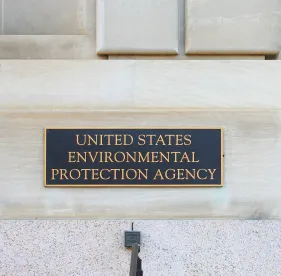Inside EPA reports today on the concerns of water suppliers needing to remove PFAS from drinking water.
Among other things, PFAS removal results in residuals, or what you and I might call sludge, that won't be going the places that it has gone because of the PFAS present in the sludge. See, for example, the report on the new Maine biosolid ban earlier this week.
All of the alternatives are expensive. So, as Inside EPA reports, members of the National Drinking Water Advisory Council (NDWAC) are looking to EPA to tell them what they're going to be required to do to address PFAS in their water, and the residuals from that treatment, and who is going to pay for it.
Although it has been a year and a half since EPA released its ambitious and wide-ranging plan for addressing PFAS, EPA is still working on the answers to these and many, many other complicated questions relating to the continued presence of PFAS in commerce and the inevitable releases of those PFAS into the environment.
I don't mean to suggest that EPA isn't working as fast as it can. And it is hardly surprising that it is taking EPA longer to get to the first destinations on its PFAS Road Map than it may have hoped.
But, in the meantime, individual States continue to act. Just two examples are the Maine biosolid ban and the report of a Massachusetts Legislative Task Force yesterday presenting dozens of recommendations about what Massachusetts should do about PFAS. See here.
For decades Federal law has provided one uniform answer to questions about drinking water quality, the remediation of hazardous substances in the environment, and the disposal of hazardous wastes. Eventually we'll have such uniform answers to these questions relating to at least many PFAS. In the meantime, the absence of uniform answers will continue to mean more confusion and more litigation.
Ryan Albert, chief of the standards branch within EPA’s drinking water office, told a panel of drinking water advisors the water office is working “very closely” with the Office of Land & Emergency Management (OLEM), which is developing a rule to regulate the two most studied PFAS -- perfluorooctanoic acid (PFOA) and perfluorooctanesulfonic acid (PFOS)-- as Superfund hazardous substances. “[W]e are very actively considering the implications of what [EPA’s] decision [on a Superfund hazardous substance designation] ultimately is . . . in terms of how it impacts the ability to treat drinking water and how waste must be managed. So we’ll consider that in terms of the standards we set, and also any costs that we consider as part of this regulatory” action, he added.




 />i
/>i

